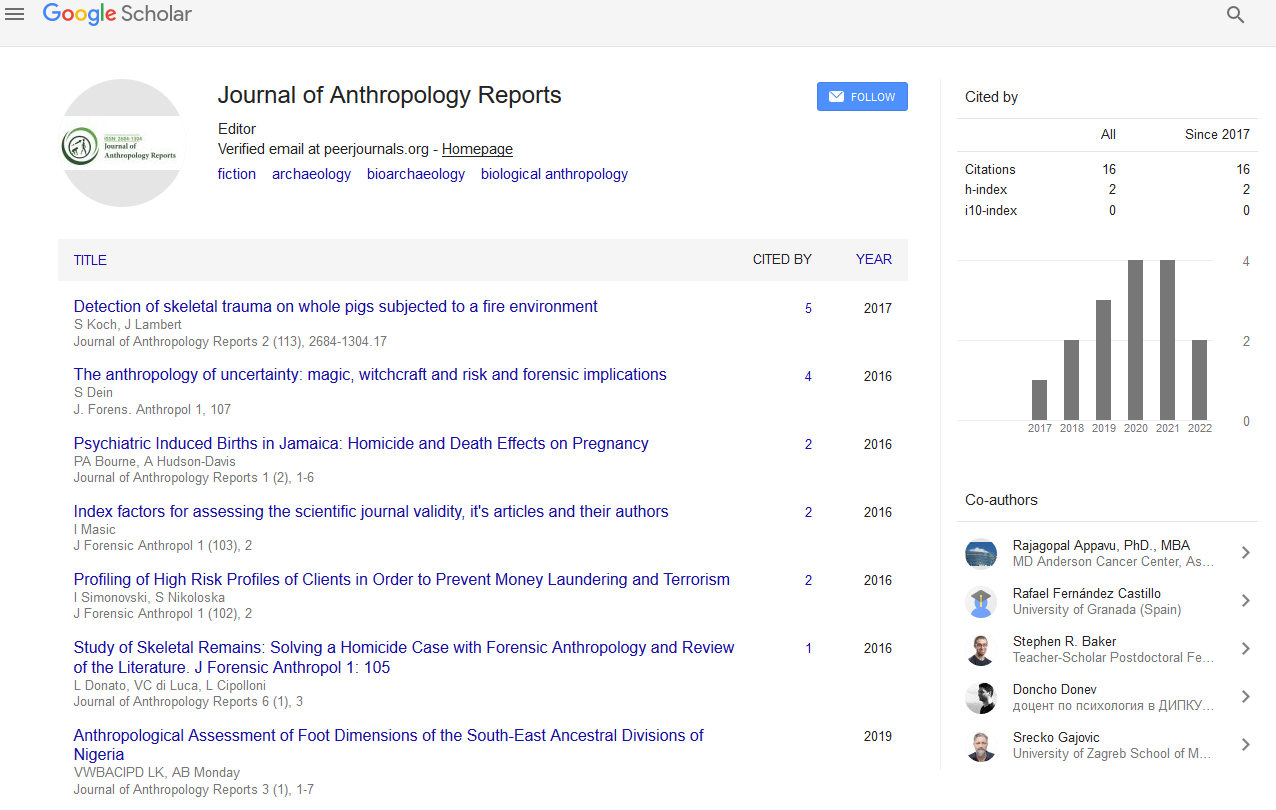Indexed In
- RefSeek
- Hamdard University
- EBSCO A-Z
Useful Links
Share This Page
Journal Flyer

Open Access Journals
- Agri and Aquaculture
- Biochemistry
- Bioinformatics & Systems Biology
- Business & Management
- Chemistry
- Clinical Sciences
- Engineering
- Food & Nutrition
- General Science
- Genetics & Molecular Biology
- Immunology & Microbiology
- Medical Sciences
- Neuroscience & Psychology
- Nursing & Health Care
- Pharmaceutical Sciences
Perspective - (2022) Volume 5, Issue 2
Theoretical Framework of Gender Based Violence against Women
Received: 02-Mar-2022, Manuscript No. JFA-22-16021; Editor assigned: 04-Mar-2022, Pre QC No. JFA-22-16021(PQ); Reviewed: 21-Mar-2022, QC No. JFA-22-16021; Revised: 28-Mar-2022, Manuscript No. JFA-22-16021(R); Published: 04-Apr-2022, DOI: 10.35248/2684-1304.22.5.123
Description
There are several theories which explain gender based violence against women. The first theory that developed in the United States was that men who battered women were mentally ill. However, gender based violence happened against every woman and this theory is proved to be wrong. The next theory described gender based violence against women as a loss of control. This “loss of control” theory is contradicted by batterers’ behavior. Batterers’ violence is carefully targeted to specific people at specific times and places. Batterers do not choose to hit their bosses or police officers, regardless of how angry or out of control they are. Batterers may choose to abuse their partners only in private, or take steps to ensure that they do not leave visible evidence of their abuse. In fact, research indicates that many batterers become more controlled and calm as their aggressiveness increases.
Another theory is that women suffered from a “learned helplessness” as a result of repeated battering that prevented them from resisting the violence or leaving the relationship. The “learned helplessness” theory, however, did not account for the fact that there are many social, economic and cultural reasons a woman might choose to stay in an abusive relationship. They may fear retaliation against themselves or their children, or they may not be able to financially support themselves or their children. They may be ostracized by their family and community if they leave. This theory is also inconsistent with the fact that women surviving in abusive relationships attempt to leave many times and routinely act in very conscious ways to try to minimize the abuse directed at them and to protect their children.
The “Family Conflict” model is another theory. According to this model, both partners contribute to the violence. The family conflict model, however, assumes that the victim’s actions somehow justify the abusive response by the batterer. Even when women do use violence in an intimate relationship, they generally do so to defend themselves from an assault. The family conflict model is closely related to the “cycle of violence” description of domestic abuse. According to this description, batterers follow a “cycle of violence” with intermittent violent and repentant episodes. Advocates in the United States found, however, that this description of the violence was not consistent with women’s experiences. Many women reported that their partners never repented in their violent relationships, and that violence was not cyclical but rather a constant presence in their lives.
The overall purpose of this research is answering the questions is what are the types of gender-based violence against women and how they affect the rights of women in higher education institution particularly in the University of Gondar. For the purpose of this research, the researcher visited three offices of the University of Gondar which are working on issues related to the case at hand. The first is the university gender, HIV/AIDS & special needs affairs Office and the second one is the university student’s union women affairs office. The last one is the university sexual harassment disciplinary issues handling committee. Besides, the researcher has made interviews with female students. Therefore, the researcher starting from made interviews. However, the right to privacy of the respondents is respected. no voice recordings were conducted without their consents. Their names are not disclosed in any way. The interview place was only open for the interviewer and the respondent. Similarly, the researcher created a friendly environment so that trust would be built. In general, all interviews were conducted with informed consent.
As noted above in the literature, gender based violence against women happens based on their gender roles, responsibilities, expectations, privileges, and limitations. It can be classified as sexual, physical, economical and psychological ones. All the interviewed indicated that, in the university there are students who suffered from severe verbal abuse that severely affected the physical and mental well-being of women students. The representatives of students’ union gender office expressed that women in the university have been physically abused. This included pushing, slapping, kicking, and choking. In addition, all the interviewees stated that women experienced psychological violence that included insulting, ignoring, yelling, isolation, and humiliation.
Citation: Morgan F (2022) Theoretical Framework of Gender Based Violence against Women. J Anthropology Rep. 5:123.
Copyright: © 2022 Morgan F. This is an open access article distributed under the terms of the Creative Commons Attribution License, which permits unrestricted use, distribution, and reproduction in any medium, provided the original author and source are credited.

